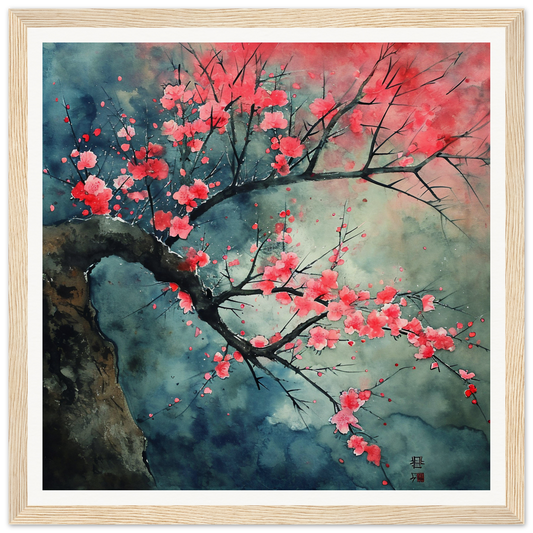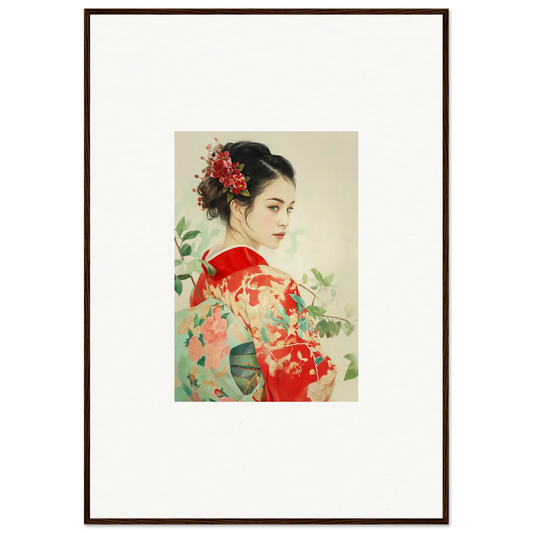
Understanding Color Theory: A Guide to Enhancing Your Design
Share
Understanding Color Theory: A Guide to Enhancing Your Design
Overview
What is Color Theory?
Color theory is the backbone of design. It's like a recipe book for creating visually appealing and harmonious color combinations. Think of it as a step-by-step guide to choosing a home color palette. Just like a chef uses different ingredients to create a delicious dish, designers use color theory to mix and match colors in their designs. It helps them understand the relationships between colors, how they interact with each other, and how to create a desired mood or atmosphere. So, if you want to take your design skills to the next level, understanding color theory is a must!
Why is Color Theory Important in Design?
Color theory is like the secret sauce of design. It's what gives your creations that extra pop and wow factor. Think of it as the difference between a plain black and white photograph and a vibrant, eye-catching masterpiece. By understanding color theory, you can create harmonious color schemes, evoke specific emotions, and guide the viewer's attention. It's like having a superpower in your design toolkit. So, if you want to take your designs to the next level, dive into the world of color theory and unlock its potential!
Basic Principles of Color Theory
Now that you have a basic understanding of what color theory is and why it's important in design, let's dive into the fundamental principles. These principles will serve as your guide in creating visually appealing and harmonious designs. Contrast is one of the key principles that can make or break a design. By using contrasting colors, you can create visual interest and make elements stand out. Another important principle is color harmony, which refers to the pleasing combination of colors. By understanding the color wheel and creating color schemes, you can achieve a harmonious balance in your designs. Lastly, don't forget about color psychology. Colors have the power to evoke emotions and convey messages. By using the right colors, you can effectively communicate your message and create a memorable experience for your audience.
Color Harmony

Understanding the Color Wheel
The color wheel is like a magic tool for designers. It's a circular diagram that shows the relationships between colors. Think of it as a compass that guides you in choosing the perfect color combinations for your design projects. By understanding the color wheel, you can create harmonious color schemes that are visually pleasing and balanced. It's like having a secret weapon in your design arsenal! So, let's dive into the wonderful world of colors and unlock the power of the color wheel.
Creating Color Schemes
When it comes to creating color schemes, it's like being a painter with a blank canvas. You have endless possibilities to play with and experiment. It's like having a box of crayons and being able to mix and match them to create your own unique colors. Whether you're designing a website, a logo, or any other visual project, color schemes are essential to make your design visually appealing and cohesive. They bring harmony and balance to your work, just like a well-orchestrated symphony. So, let's dive into the world of color schemes and unleash your inner artist!
Using Color Psychology in Design
Color psychology is a fascinating field that explores how different colors can evoke specific emotions and reactions in people. By understanding the psychological effects of colors, designers can strategically choose colors that align with the desired mood or message of their design. For example, warm colors like red and orange can create a sense of energy and excitement, while cool colors like blue and green can evoke feelings of calmness and tranquility. By incorporating these principles of color psychology into your design, you can create a visually appealing and emotionally impactful experience for your audience.
Color Contrast

The Importance of Contrast in Design
Contrast is a key element in design that can make your work stand out and grab attention. It's like adding a splash of color to a black and white photograph, or a burst of flavor to a plain bowl of oatmeal. Without contrast, designs can feel flat and uninteresting, like a monotonous lecture on the history of paperclips. So how do you create contrast in your designs? Well, it's all about finding the right balance between light and dark, big and small, loud and quiet. Think of it as a dance between opposites, where each partner brings out the best in the other. By using contrasting colors, fonts, and sizes, you can create visual interest and guide the viewer's eye to the most important parts of your design. It's like adding a little spice to your design soup, or a dash of excitement to your design salsa. So don't be afraid to play with contrast and let your designs shine!
Using Contrast to Enhance Readability
When it comes to design, readability is crucial. One effective way to enhance readability is by using contrast. Contrast helps to make text and other design elements stand out, making them easier to read and understand. By using different colors, fonts, or sizes, you can create a clear distinction between different elements. Using the Adobe Color Wheel to Enhance Your Designs is a great tool for selecting complementary colors that create a visually appealing contrast. It allows you to explore different color combinations and find the perfect balance for your design. Don't underestimate the power of contrast in making your design more engaging and easy to read!
Creating Visual Hierarchy with Contrast
When it comes to design, creating visual hierarchy is essential. Contrast is a powerful tool that can help you achieve this. By using contrasting colors, you can make certain elements stand out and draw the viewer's attention. Color Trends Report is a great resource to stay updated on the latest color trends and incorporate them into your designs. Additionally, you can use contrast to create depth and dimension in your design by playing with light and dark shades. This can add visual interest and make your design more dynamic. Remember, the key is to find the right balance between contrast and harmony to create a visually appealing composition.
Conclusion
Applying Color Theory to Your Design Projects
Congratulations! You've made it to the most exciting part of the color theory journey. Now it's time to unleash your creativity and apply what you've learned to your design projects. Remember, color is like a secret weapon in design. It can evoke emotions, create visual interest, and communicate messages. So, how can you make the most out of color in your designs? Here are a few tips:
-
Experiment with Color Combinations: Don't be afraid to mix and match different colors to create unique and eye-catching designs. Play around with complementary, analogous, or triadic color schemes to find the perfect combination.
-
Consider Context: Keep in mind the context in which your design will be used. Different colors have different meanings and associations in different cultures and industries. Make sure your color choices align with the message and purpose of your design.
-
Continuously Learn: Color theory is a vast subject, and there's always more to learn. Stay curious and keep exploring new color palettes, trends, and techniques. The more you learn, the more you'll be able to elevate your design skills.
So, go ahead and dive into the colorful world of design. Let your imagination run wild and create designs that are not only visually stunning but also strategically impactful. Happy designing!
Experimenting with Color Combinations
When it comes to experimenting with color combinations, the possibilities are endless. It's like being a mad scientist in a lab, mixing different colors and observing the magical reactions they create. Just like how adding a pinch of salt can transform a dish from bland to flavorful, adding the right colors can enhance architectural design through strategic color combinations. It's all about finding the perfect balance and harmony between hues. You can start by exploring different color schemes, such as complementary, analogous, or triadic. Each scheme has its own unique vibe and can evoke different emotions. Don't be afraid to think outside the box and try unconventional combinations. Remember, design is all about pushing boundaries and creating something visually captivating. So go ahead, grab your color palette, and let your creativity run wild!
Continuing Your Color Education
Now that you have a solid understanding of color theory and how it can enhance your design, it's time to continue your color education. Just like binge-watching your favorite TV series, learning about color is an ongoing process. So grab your popcorn and get ready to dive deeper into the world of color. You can explore advanced color theory concepts, experiment with different color combinations, and stay updated with the latest color trends. Remember, color is like a Sony A95L OLED TV, it has the power to captivate and evoke emotions. So keep learning, keep experimenting, and let your design shine!































